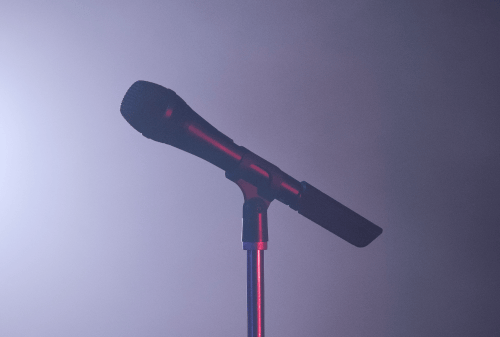“I sat with [Musical Director] Keith [Harris] and we discussed re-recording all the tracks, every single part, in isolation. I wanted all the kicks separated, every single snare, every triangle hit. So, they brought in a string section, the brass section -- everything is recorded [as separate tracks],” says McCullagh. The all-new arrangement resulted in around 150-plus raw tracks in the box as individual tracks, un-EQ’d, uncompressed, and entirely unprocessed. “That’s how we get such a live sound. Even though we’re using tracks, none of it is mastered. We don’t get squashed tracks coming to us that sound like they're being done and processed in the studio.”
For his FOH duties on the road, McCullagh relies on using Sennheiser Digital 6000 wireless for the band's vocal mics, which was an easy decision. “When it comes to signal flow, the top of the chain is the Sennheiser 6000 with the 9235 capsule. We went through extensive testing with multiple different brands, different capsules and the 6000 was our only choice. The pattern of the 9235 cap is a dual-diaphragm, with a hyper-cardioid high end, and a cardioid low end. This is great because it gives you the warmth that you want when you pull the mic away, but it also gives you the maximum high-end rejection. With the loud audiences that we have, we need every bit of help that we can get.”
Finding the perfect microphone is only half the battle for McCullagh, who is tasked with not one, but five lead vocalists to help sound perfect each night on the road. “They all have slightly different characteristics and you want to definitely highlight each person’s voice. But, at the same time, when they all sing together, you want to make sure they sound like a vocal harmony group and sound like one, and not a combination of five individual voices.”
To help with this challenge, McCullagh has an individual vocal channel set on each of the five members using the Waves RS56 Passive EQ plugin. “Essentially what I’m trying to do is tighten all the vocals together, and make them act as one. When you put a lot of compression on vocals, that sometimes squeezes them and the RS56 does a great job of just putting life back into [the vocals].”
“The other thing I did was set up their vocals on my console [an SSL L500] from how they generally sing, low to high. Kevin usually always takes the lower end of the harmonies and Howie always takes the higher end of the harmonies. On my console, I set up Kevin first, Nick, A.J., Brian and then Howie. Over time, I’ve learned exactly who sings which part where, when, and how.” From there, everything gets bused to what McCullagh calls his mastering section, an SSL G Series bus compressor, followed by an SSL fusion, then Bettermaker Mastering Limiter. “A limiter was an interesting choice,” admits McCullagh. “I don’t really want to squash my mix and master it per se, but what I do want to do is try and manage the overall [audience] volume from night [to night].”
And, for McCullagh, managing the volume is quite a tough job, when fans of the band often scream in excess of 110 decibels for long durations. After reducing some of the ‘ear fatigue,’ the Burl B2 Bomber converts the signal back from analog to digital.
As the FOH engineer, McCullagh is always in tune with the needs of the band during the shows. “It’s very much reading people. Like I've learned to read the crowd, I've learned to read the guys. [I need to] know how they’re feeling. I’m an extension of them as a unit. However they are delivering, I need to replicate that... I have learned the boys are very involved in terms of what they want from production aspects. In my case, with the sound, we have a game tape. In the beginning part of the tour, every night they would listen and send me notes...we basically polish it up and fix any little details that were bothering anybody, until the product that we’ve got. Now, night after night, it’s the same.”
While the game tape may be a great playbook for what the sound should be like at every stop on the tour, McCullagh makes sure the concerts don’t sound too ‘studio-perfect.’ “I’ve always tended to lean towards an audience experience. I’m not so interested in getting a studio perfect mix,” he adds. “People don’t come to live concerts to hear what it sounds like on a CD. Backstreet Boy fans, they come to hear the boys. They want to hear every single one of their favorite Backstreet Boys in huge detail, soaring above everything else, and they want to hear them blended perfectly. So, I focus on the vocals. I make sure that they’re clear, precise, mixed perfectly and then you know, try to mix in energy with that.”
McCullagh says an important trick he’s learned as an engineer is to listen to the music. “Let the music speak,” he says. “If it’s about the lyrics, make the vocals up front. If it’s about energy, let the bass, let the kick, let those elements shine. Listen to the audience. What does the audience want? What do they want to hear? What are people gonna take away from the show? Let that move you, as opposed to the technical aspects.”
Lastly, McCullagh offers insight for someone getting started in the industry, “This industry is pretty tough,” he says candidly. “I think you’ve got to believe in yourself and just keep trying. What makes this industry so exciting is that there is no one way or no fixed way to make it in. Keep knocking on doors.”
































